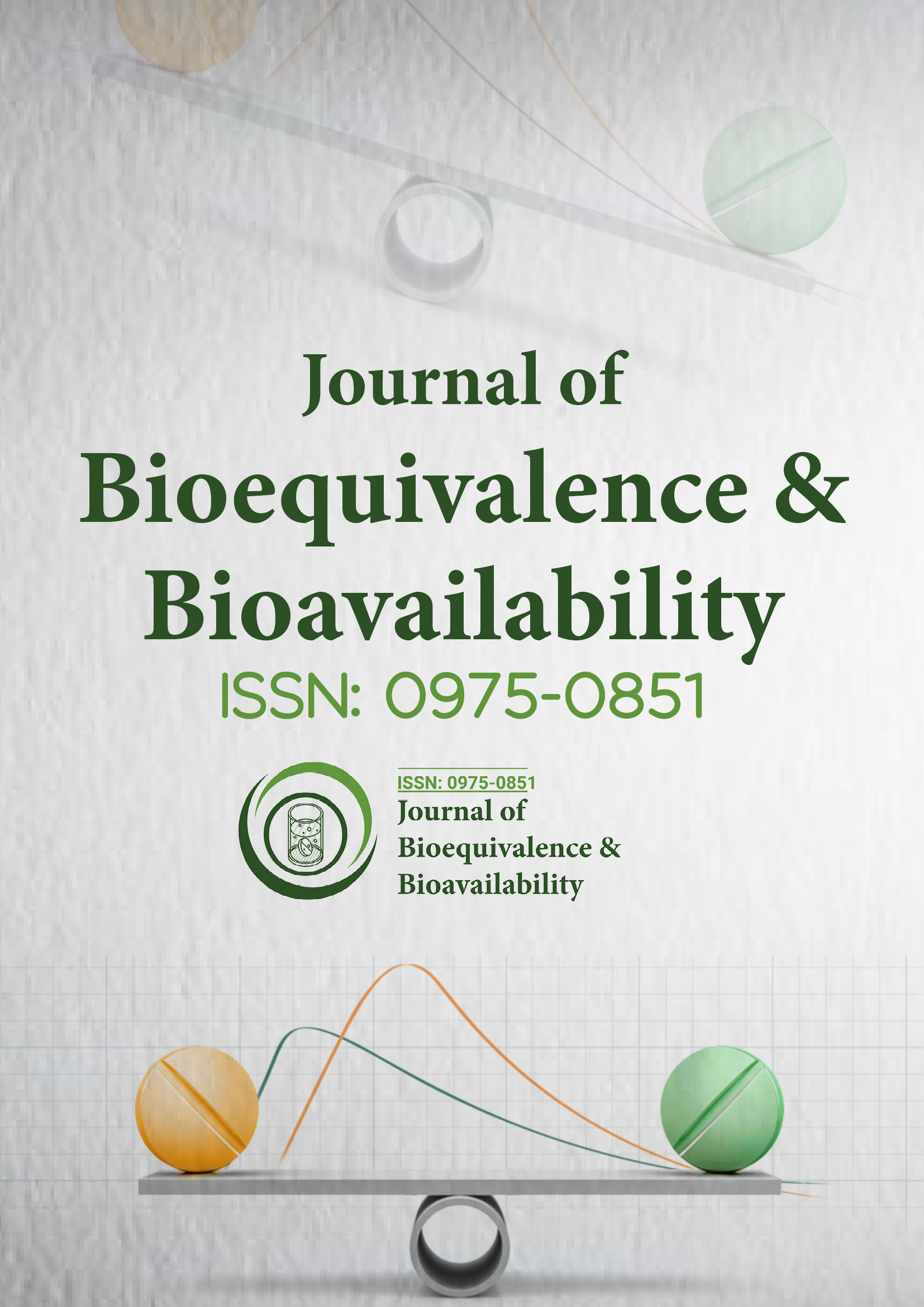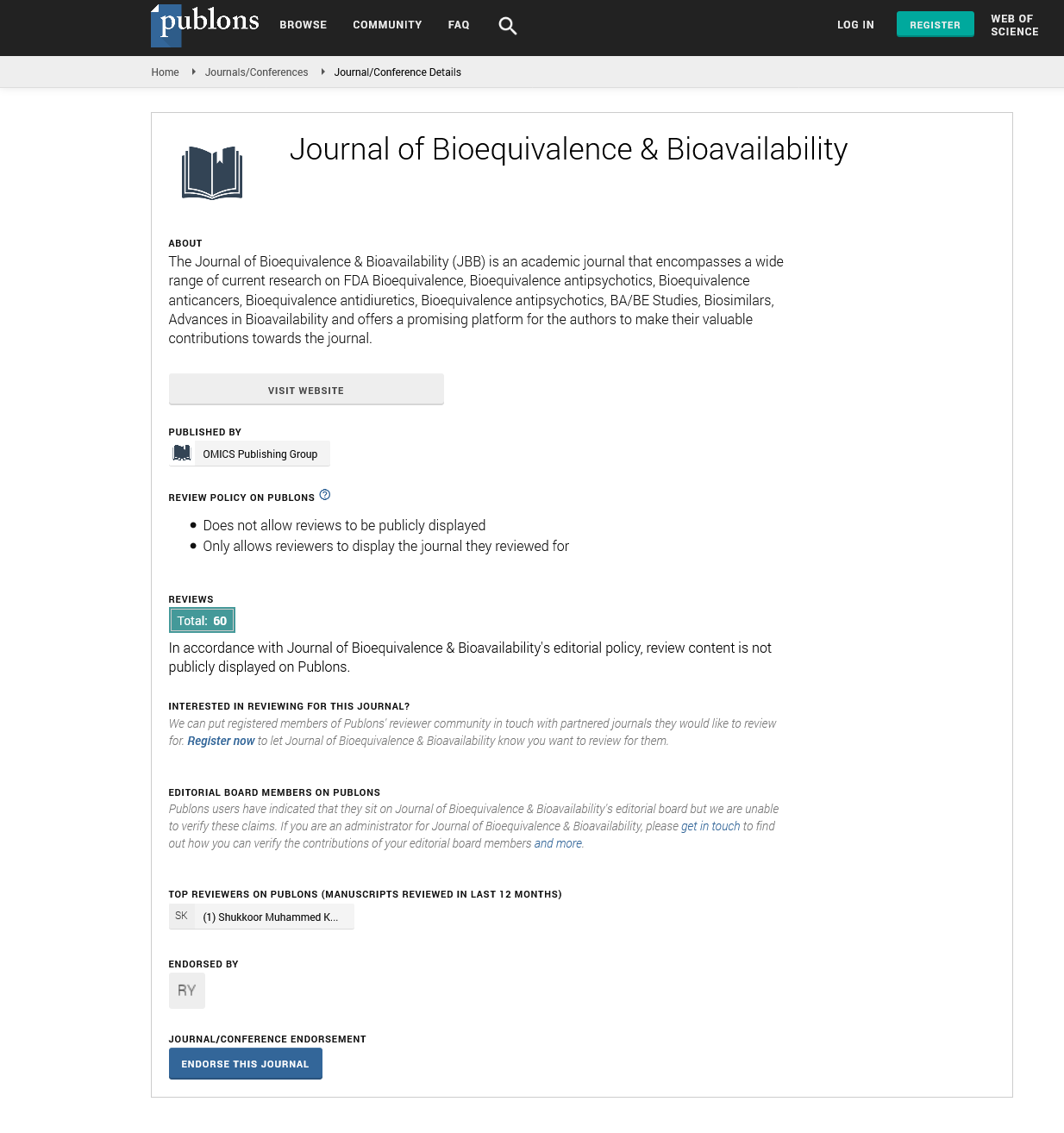Indexed In
- Academic Journals Database
- Open J Gate
- Genamics JournalSeek
- Academic Keys
- JournalTOCs
- China National Knowledge Infrastructure (CNKI)
- CiteFactor
- Scimago
- Ulrich's Periodicals Directory
- Electronic Journals Library
- RefSeek
- Hamdard University
- EBSCO A-Z
- OCLC- WorldCat
- SWB online catalog
- Virtual Library of Biology (vifabio)
- Publons
- MIAR
- University Grants Commission
- Geneva Foundation for Medical Education and Research
- Euro Pub
- Google Scholar
Useful Links
Share This Page
Journal Flyer

Open Access Journals
- Agri and Aquaculture
- Biochemistry
- Bioinformatics & Systems Biology
- Business & Management
- Chemistry
- Clinical Sciences
- Engineering
- Food & Nutrition
- General Science
- Genetics & Molecular Biology
- Immunology & Microbiology
- Medical Sciences
- Neuroscience & Psychology
- Nursing & Health Care
- Pharmaceutical Sciences
Commentary - (2025) Volume 17, Issue 3
Advances in the Study of Drug Metabolic Processes
Dominique Lunter*Received: 28-May-2025, Manuscript No. JBB-25-30135; Editor assigned: 30-May-2025, Pre QC No. JBB-25-30135 (PQ); Reviewed: 13-Jun-2025, QC No. JBB-25-30135; Revised: 20-May-2025, Manuscript No. JBB-25-30135 (R); Published: 29-Jun-2025, DOI: 10.35248/0975-0851.25.17.635
Description
Drug metabolism is a fundamental process in pharmacology that determines how the body chemically modifies and eliminates drugs. It plays an important role in regulating the duration and intensity of a drug’s action, influencing its therapeutic effectiveness and potential toxicity. Understanding drug metabolism is essential for designing safe and effective medications, predicting drug interactions, and ensuring bioequivalence between formulations.
Drug metabolism primarily occurs in the liver, although other organs such as the intestines, kidneys, lungs, and skin also contribute. The liver’s enzyme systems transform lipophilic drug molecules into more hydrophilic metabolites that can be readily excreted from the body. This transformation typically occurs through two major phases: Phase I and Phase II reactions.
Phase I metabolism, also known as functionalization, introduces or unmasks functional groups on the drug molecule. These reactions include oxidation, reduction, and hydrolysis. The cytochrome P450 enzyme family is the most important group involved in oxidative metabolism. These enzymes are located mainly in the smooth endoplasmic reticulum of liver cells and are responsible for metabolizing a wide range of xenobiotics. The activity of these enzymes can vary significantly among individuals due to genetic polymorphisms, age, diet, and environmental factors, which can affect drug clearance and therapeutic response.
Phase II metabolism, or conjugation, involves coupling the drug or its Phase I metabolite with an endogenous molecule such as glucuronic acid, sulfate, acetate, or glutathione. These reactions are catalyzed by transferase enzymes including UDP-Glucuronosyltransferase (UGT), Sulfotransferase (SULT), and Glutathione S-Transferase (GST). Conjugation generally increases the molecule’s water solubility, facilitating renal or biliary excretion. In some cases, Phase II reactions can also deactivate pharmacologically active metabolites, thus terminating drug action.
Drug metabolism serves several critical physiological purposes. It aids in detoxifying foreign compounds, reduces the risk of accumulation and toxicity, and helps maintain homeostasis. However, metabolism can also generate toxic intermediates or reactive metabolites, which may lead to organ damage or adverse reactions. For example, the analgesic acetaminophen (paracetamol) undergoes normal conjugation at therapeutic doses, but in overdose situations, an alternative metabolic pathway forms a hepatotoxic intermediate that causes liver injury.
First-pass metabolism is another key concept in drug absorption and metabolism. Drugs administered orally pass through the liver before reaching systemic circulation, where extensive metabolism can significantly reduce their bioavailability. This effect explains why some drugs require higher oral doses or alternative routes of administration such as transdermal, sublingual, or intravenous delivery to achieve therapeutic plasma levels.
Drug metabolism studies are essential components of bioequivalence and bioavailability assessments. Comparing metabolic profiles of test and reference products ensures that generic formulations produce similar active metabolite concentrations and therapeutic effects. Analytical techniques such as mass spectrometry, High-Performance Liquid Chromatography (HPLC), and in vitro liver microsome assays are routinely used to characterize metabolic pathways and quantify metabolites.
In conclusion, drug metabolism is a vital determinant of drug disposition, efficacy, and safety. It encompasses a complex network of enzymatic pathways that modify drugs to facilitate their elimination. A comprehensive understanding of metabolic processes is indispensable in modern pharmacology, bioequivalence evaluation, and personalized medicine. By integrating metabolic studies into drug development and clinical practice, researchers and clinicians can optimize therapeutic outcomes and minimize adverse effects, paving the way for safer and more effective therapies.
Citation: Lunter D (2025). Advances in the Study of Drug Metabolic Processes. J Bioequiv Availab. 17:635
Copyright: © 2025 Lunter D. This is an open-access article distributed under the terms of the Creative Commons Attribution License, which permits unrestricted use, distribution, and reproduction in any medium, provided the original author and source are credited.

